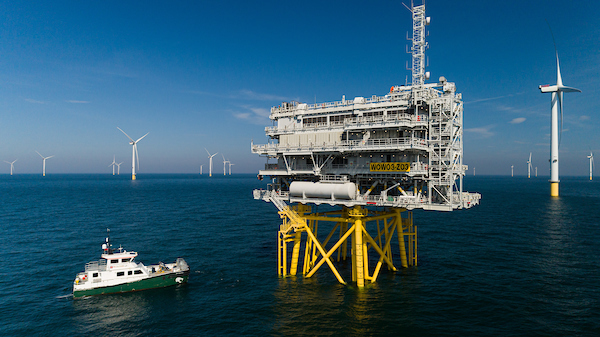Solutions
Our passionate and experienced people deliver successful clean energy projects globally.
Technologies
Driving a clean energy future through state-of-the-art renewable technologies.
See all technologiesResources
Browse our latest resources, including company updates, customer stories, industry insights, and research reports.
See all resourcesCareers
Join a collaborative team of passionate individuals who engage in meaningful, stimulating, and world-changing work.
See all careersAbout RES
We live our mission, celebrate the people making it happen and transform the way the world produces and consumes energy.
See about usOur offices
Like our business, we’re truly global – but proudly local. Find contact and location details for every RES office.
Contact us
With Scottish Renewables’ Offshore Wind Conference 2023 taking place this week, did you know that one of the world’s very first wind turbines was built by the Scottish electrical engineer James Blyth in 1887 to power his cottage in Marykirk, Kincardineshire?
Ahead of his time, it would be another century before wind turbines entered into commercial operation. Fast forward to now, the wind industry is playing a pivotal role in achieving global emissions targets to combat climate change. With more turbines being commissioned than ever before, the offshore wind operations and maintenance (O&M) market is expected to grow at a compounded annual growth rate of 16%. While Europe will remain the biggest market, reaching €5.5 billion by 2029, substantial uptake in Asia and US brings new opportunities for domestic industry and international investors alike.
However, this rapid growth also represents a risk. As it stands, the effective management of renewable energy assets is complex and relies on being able to access the right information at the right time – something that is not always possible with the O&M strategies in use today. As the turbine fleet ages and projects are built further offshore it will become more and more necessary to evolve our O&M strategies by maximising the use of data and adopting new technologies.
The power of data
We live in an information age where data sources are all around us but capturing good data and utilising it correctly is a challenge. We are pulling data from SCADA systems, critical component condition, financial management applications, HSQE platforms, weather stations, met masts and more. Something we quickly realised at RES was that by fully integrating this data into one holistic platform, digital solutions can be applied, supporting asset owners and managers to maximise asset performance. By creating a seamless ecosystem of dataflows, it is possible to obtain a comprehensive live activity feed, alongside analytics, actionable insights, customer integrations and reporting. Mostly importantly for O&M, it provides opportunities to increase productivity and reduce cost from unscheduled or poorly scheduled downtime.
Smarter condition-based monitoring
While OEMs typically use condition-based monitoring systems to limit the cost of their defect warranties, assets owners can also use the data to maximise asset production and revenue while minimising the risk of catastrophic failure. Smart CMS is a technology agnostic condition monitoring tool developed by RES that uses standardised turbine health indicators and machine learning to help our analysts dig deeper into the vast amount of data gathered across portfolios with different wind turbine types. The use of this tool helps us to automate and standardise OEM data across large portfolios, giving a single agnostic view of any CMS, which in turn improves our ability to predict failures and determine the remaining lifespan of components.
Our system can also give OEMs, who we have very strong relationships with, the ability to improve on availability as the early detection of issues leads to less downtime. We use SMART-CMS on many of the projects we manage including one of the world’s largest offshore wind farms. It reduces manual data crunching and frees up CMS engineer’s time to work on high value investigations for the client and develop more advanced analysis techniques. SMART-CMS ensures that the risk of catastrophic failures is minimised, whilst asset production and revenue is maximised.
3D modelling
Based on building information modelling principles, 3D models are used in the development and pre-construction phases of offshore wind farms. For instance, when RES provided development and engineering services to recent projects in UK and France, suppliers provided 3D models of the wind turbines, jacket foundations and array/export cables. By combining the models RES developed full comprehensive 3D models and users were able to undertake a more detailed assessment of the design such as key physical interfaces, as well as identify equipment clashes, H&S risks and better planning for installation, operation and maintenance activities.
3D models can also be taken one step further by developing the 3D model data for use in virtual reality (VR), enabling full scale immersive visualisation and collaboration. This opens the door for realistic health and safety training and virtual walkthroughs, allowing for inductions and equipment familiarisation to take place in a safe environment. Using VR also helps to maximise the time spent offshore as tasks can be fully planned and technicians can familiarise themselves with the environment before going offshore.
Of course, it’s not just about data, we need people too. We need to work together to develop the workforce that we need for the future to optimise our O&M strategies.
To find out more about some of our latest innovations and how we are helping to plug the skills gap, meet us at the Offshore Wind Conference 2023 in Glasgow on the 25th and 26th of January.
